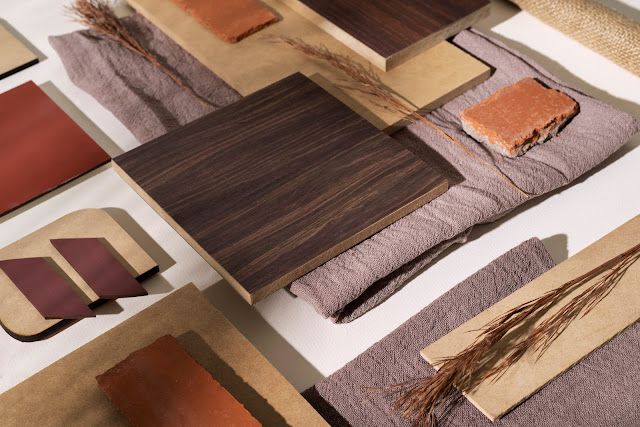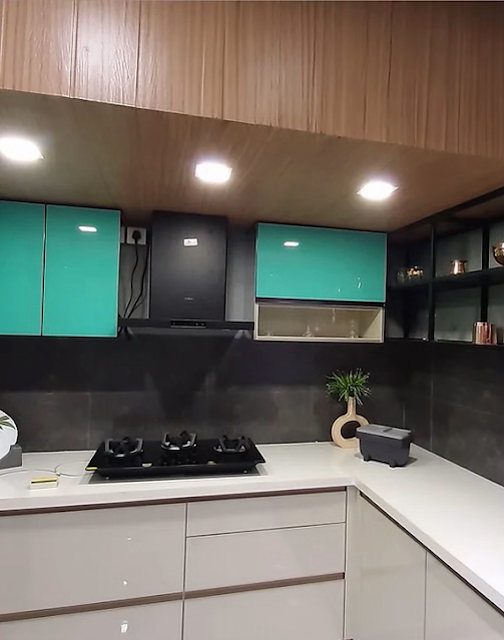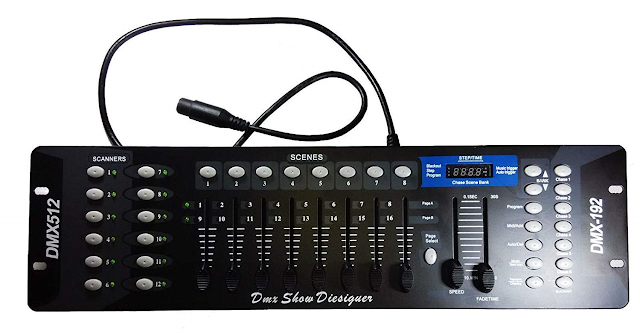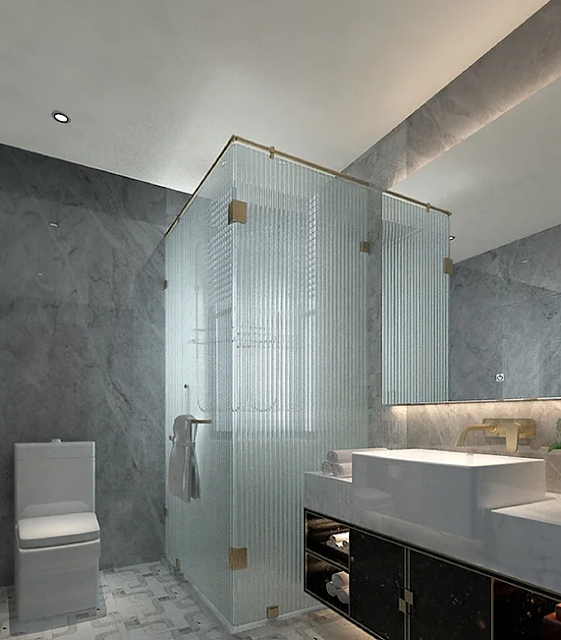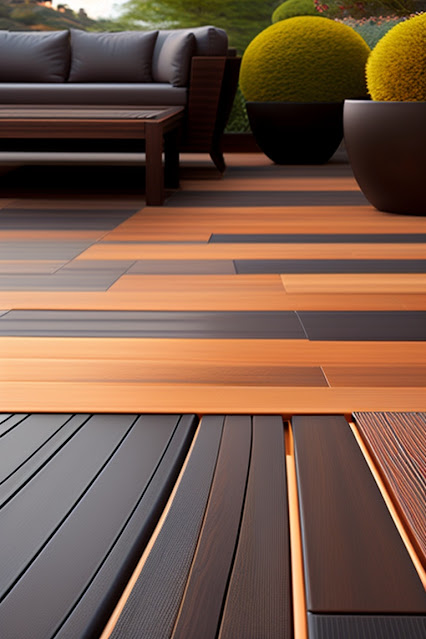Welcome to the ultimate guide on the best vinyl wood flooring, vinyl flooring prices, and vinyl flooring in India. Whether you are renovating your home or starting a new project, choosing the right flooring is crucial. Vinyl wood flooring has gained popularity in recent years due to its durability, affordability, and aesthetic appeal. In this comprehensive guide, we will explore the various aspects of vinyl wood flooring, discuss pricing options, and provide valuable insights into the Indian market. So, let's dive in and discover everything you need to know about the best vinyl wood flooring, vinyl flooring prices, and vinyl flooring options in India!
Benefits of Vinyl Wood Flooring
Best Vinyl wood flooring offers numerous benefits that make it an ideal choice for homeowners and interior designers alike. Let's explore some of the key advantages:
- Durability: Vinyl wood flooring is highly durable, capable of withstanding heavy foot traffic, scratches, and spills. It is an excellent choice for high-traffic areas such as living rooms, kitchens, and hallways.
- Affordability: Compared to hardwood or laminate flooring, vinyl wood flooring is more affordable without compromising on quality or aesthetics. It provides a cost-effective alternative that replicates the natural look of wood at a fraction of the cost.
- Water Resistance: Vinyl wood flooring is highly resistant to water, making it suitable for areas prone to moisture, such as bathrooms and basements. It is also easy to clean and maintain, as spills can be quickly wiped away without causing damage.
- Variety of Styles: Vinyl wood flooring offers a wide range of styles, colors, and patterns to choose from. Whether you prefer a classic oak look or a modern gray finish, there is a vinyl option to suit every design aesthetic and personal preference.
- Easy Installation: Vinyl wood flooring is known for its ease of installation. It can be installed as a floating floor, which means it does not require adhesives or nails. This makes it a popular choice for DIY enthusiasts and saves both time and money on installation costs.
- Comfort Underfoot: Unlike hardwood flooring, vinyl wood flooring provides a softer and more comfortable surface to walk on. It has a slight give underfoot, making it more forgiving and reducing strain on joints and feet.
Types of Vinyl Flooring
When it comes to vinyl flooring, there are different types to consider based on your specific needs and preferences. Here are the most common types of vinyl flooring:
- Luxury Vinyl Plank (LVP): LVP is designed to mimic the appearance of hardwood planks. It comes in various lengths and widths, allowing for customizable installations. LVP often features a textured surface that adds to its realistic wood-like look and feel.
- Luxury Vinyl Tile (LVT): LVT is similar to LVP but replicates the look of ceramic or stone tiles instead of wood. It offers the same durability and water resistance as LVP, making it a versatile option for any room in your home.
- Sheet Vinyl: Sheet vinyl comes in large rolls and is suitable for covering larger areas without seams. It is a cost-effective option and provides excellent moisture resistance. Sheet vinyl is available in a wide range of designs, including wood, tile, and abstract patterns.
- Vinyl Composite Tile (VCT): VCT is a durable and affordable vinyl flooring option commonly used in commercial settings. It is made from a mixture of vinyl resins, fillers, and pigments. VCT requires regular maintenance and periodic waxing to preserve its appearance and extend its lifespan.
Choosing the Right Vinyl Wood Flooring
When selecting vinyl wood flooring for your space, there are several factors to consider to ensure you make the best choice. Here are some essential considerations:
- Room Function: Determine the function of the room where the flooring will be installed. High-traffic areas like the living room or kitchen may require more durable options, while bedrooms may prioritize comfort and aesthetics.
- Style and Design: Consider the overall style and design of your space. Choose a vinyl wood flooring option that complements your existing décor and color scheme. Whether you prefer a rustic farmhouse look or a sleek modern aesthetic, select a style that aligns with your vision.
- Thickness and Wear Layer: Pay attention to the thickness of the vinyl planks or tiles and the wear layer, which affects durability. Thicker planks tend to be more durable and can withstand heavier use. A thicker wear layer provides better resistance against scratches and stains.
- Installation Method: Decide whether you want to install the flooring yourself or hire a professional. Some vinyl wood flooring options are designed for easy DIY installation, while others may require professional expertise. Factor in the installation method when making your decision.
- Budget: Set a budget for your vinyl wood flooring project. Vinyl flooring prices can vary based on factors such as quality, brand, and design. Determine your budget and explore options that fit within your financial constraints. Remember to consider the long-term value and durability of the flooring when evaluating pricing options.
- Environmental Considerations: If sustainability is important to you, look for vinyl wood flooring options that are environmentally friendly. Some manufacturers offer eco-friendly vinyl flooring made from recycled materials or utilizing low-VOC (volatile organic compounds) technology, reducing their impact on the environment.
- Reviews and Recommendations: Research customer reviews and seek recommendations from trusted sources. Reading about the experiences of others who have installed vinyl wood flooring can provide valuable insights into the quality, durability, and overall satisfaction with different brands and products.
By taking these factors into account, you can confidently choose the best vinyl wood flooring that meets your specific requirements and enhances the beauty and functionality of your space.
Installation Process
Installing vinyl wood flooring is a straightforward process, especially if you opt for the floating floor method. Here's a general overview of the installation process:
- Prepare the Subfloor: Ensure that the subfloor is clean, smooth, and free from any debris. Repair any imperfections and level uneven areas. It is essential to have a well-prepared subfloor for a successful vinyl wood flooring installation.
- Acclimate the Flooring: Before installation, allow the vinyl wood flooring to acclimate to the room's temperature and humidity levels. Follow the manufacturer's instructions regarding the recommended acclimation period.
- Measure and Plan: Measure the dimensions of the room and plan the layout of the flooring. Consider the placement of planks or tiles, ensuring a visually appealing pattern and minimal waste. Make necessary cuts and adjustments to fit the flooring around obstacles like doorways or cabinets.
- Install Underlayment (if necessary): Depending on the specific vinyl wood flooring product, you may need to install an underlayment. The underlayment provides additional cushioning, sound insulation, and moisture resistance.
- Install the Flooring: Begin the installation by laying the first row of planks or tiles along a straight edge, using spacers to maintain an even gap along the walls. Interlock the planks or tiles, following the manufacturer's instructions for the specific locking mechanism.
- Continue the Installation: Proceed to install subsequent rows, ensuring a staggered pattern to enhance the stability and aesthetics of the flooring. Use a tapping block and rubber mallet to secure the planks or tiles tightly together.
- Trim and Finish: Once the main area is covered, trim the last row of planks or tiles to fit using a utility knife or a saw. Install any necessary transition pieces or moldings to create a seamless transition between different flooring surfaces. Finally, clean the flooring and remove any installation debris.
It is worth noting that these are general guidelines, and specific installation instructions may vary depending on the manufacturer and product. Always refer to the manufacturer's guidelines and installation instructions for the vinyl wood flooring you have selected.
Maintaining Vinyl Wood Flooring
Proper maintenance is crucial to ensure the longevity and beauty of your vinyl wood flooring. By following these maintenance tips, you can keep your flooring looking its best:
- Regular Cleaning: Sweep or vacuum the flooring regularly to remove dust, dirt, and debris. Use a damp mop or microfiber cloth with a mild cleaner specifically designed for vinyl flooring. Avoid using abrasive or harsh cleaners that can damage the surface.
- Prompt Spill Cleanup: Clean up spills immediately to prevent staining or damage to the flooring. Wipe away spills with a damp cloth or sponge, and dry the area thoroughly.
- Avoid Excessive Moisture: While vinyl wood flooring is water-resistant, it is essential to minimize exposure to excessive moisture. Wipe up any standing water promptly and avoid using excessive amounts of water when cleaning the flooring.
- Use Protective Measures: Place doormats at entryways to trap dirt and prevent it from being tracked onto the flooring. Use furniture pads or coasters to prevent scratches and indentations from heavy furniture. Avoid dragging heavy objects across the floor.
- Avoid Harsh Chemicals: Harsh chemicals, such as bleach or ammonia-based cleaners, can damage the surface of vinyl wood flooring. Stick to mild cleaners recommended for vinyl flooring or use homemade solutions like a mixture of warm water and vinegar.
- Protect from Direct Sunlight: Prolonged exposure to direct sunlight can cause fading or discoloration of the flooring. Consider using window treatments or UV-protective films to minimize the impact of sunlight on your vinyl wood flooring.
- Regular Maintenance Checks: Periodically inspect the flooring for any signs of wear, damage, or loose planks. Address any issues promptly to prevent further damage and ensure the longevity of your vinyl wood flooring.
By following these maintenance practices, you can preserve the beauty and integrity of your vinyl wood flooring for years to come.
Comparing Vinyl Flooring Prices
Vinyl flooring prices can vary based on several factors, including the type of vinyl, brand, quality, and design. It is essential to compare prices and consider your budget while also taking into account the durability and longevity of the flooring. Here are some key points to consider when comparing vinyl flooring prices:
- Quality and Durability: Higher-quality vinyl flooring may come at a higher price, but it often offers better durability and longevity. Consider investing in a higher-quality option if you expect heavy foot traffic or have specific requirements for your space.
- Brand Reputation: Established and reputable brands may have higher prices, but they often come with a guarantee of quality and customer satisfaction. Research brands with positive reviews and a history of producing reliable vinyl flooring products.
- Design and Aesthetics: Vinyl flooring prices can vary depending on the design, pattern, and aesthetic appeal. Intricate patterns or designs that closely resemble natural materials like wood or stone may be priced higher than simpler designs.
- Warranty and Customer Support: Consider the warranty offered by the manufacturer. A longer warranty period can provide peace of mind and assurance of the flooring's quality. Additionally, check if the manufacturer offers reliable customer support in case of any issues or concerns.
- Installation Costs: Keep in mind that the cost of vinyl flooring does not solely include the price of the material. Consider installation costs if you plan to hire professionals for the installation. Some flooring retailers may offer installation services as well.
It is advisable to request quotes from multiple suppliers or retailers, comparing prices for similar vinyl flooring options. However, remember that the cheapest option may not always be the best choice in terms of quality and longevity. Evaluate the overall value and consider the long-term benefits when making your decision.
Factors Influencing Vinyl Flooring Prices in India
Vinyl flooring prices in India can be influenced by various factors. Understanding these factors can help you make an informed decision when purchasing vinyl flooring. Here are some key factors that affect vinyl flooring prices in India:
- Quality and Grade: The quality and grade of vinyl flooring can significantly impact the price. Higher-grade vinyl with better durability, wear resistance, and design quality is likely to be priced higher than lower-grade options.
- Brand Reputation: Established brands with a strong reputation often command higher prices due to their track record of producing high-quality vinyl flooring. These brands invest in research, technology, and innovation, resulting in superior products.
- Market Demand: Market demand can influence pricing. If there is high demand for vinyl flooring in India, prices may be slightly higher due to increased competition and limited supply. Conversely, during periods of low demand, prices may be more competitive as suppliers strive to attract customers.
- Installation Complexity: The complexity of installation can affect the overall cost of vinyl flooring. If the installation requires additional preparation or specialized techniques, such as in irregularly shaped rooms or intricate patterns, the installation cost may increase.
- Design and Aesthetics: Vinyl flooring with unique designs, patterns, or textures may be priced higher than standard options. Intricate wood grain patterns or tile-like designs that closely resemble natural materials may come at a premium.
- Thickness and Wear Layer: Thicker vinyl planks or tiles with a durable wear layer tend to be priced higher than thinner options. Thicker flooring provides better durability and can withstand heavier use, making it a popular choice for high-traffic areas.
- Additional Features and Technology: Certain vinyl flooring options may incorporate additional features such as antimicrobial properties, sound insulation, or enhanced water resistance. These added features can contribute to a higher price point.
- Geographical Location: Prices can vary based on the geographical location within India. Factors such as transportation costs, local market dynamics, and regional availability of materials can influence the pricing in different areas.
- Economic Factors: Overall economic conditions, including inflation rates, currency fluctuations, and production costs, can impact vinyl flooring prices. Changes in raw material costs, manufacturing expenses, or import/export regulations can influence pricing trends.
- Supplier and Retailer Markup: The pricing set by suppliers and retailers also plays a role in determining the final cost of vinyl flooring. Different suppliers and retailers may have varying pricing structures and profit margins, leading to differences in prices.
It's important to research and compare prices from multiple suppliers and retailers in your area to ensure you are getting the best value for your investment. Consider factors such as quality, design, installation complexity, and additional features when evaluating vinyl flooring prices in India.
Conclusion:
Vinyl wood flooring offers an excellent combination of aesthetics, durability, and affordability, making it a popular choice for homeowners in India. Whether you're looking to enhance the beauty of your living space, upgrade your commercial area, or simply seeking a practical flooring solution, vinyl wood flooring provides a range of benefits.
In this comprehensive guide, we have explored the key considerations when choosing the best vinyl wood flooring. We have discussed the importance of factors such as quality, design options, pricing, installation process, and maintenance. By understanding these aspects, you can make an informed decision that aligns with your preferences, budget, and specific requirements.
Read Also:
Frequently Asked Questions (FAQs):
Q1: Is vinyl wood flooring suitable for bathrooms?
Ans: Yes, vinyl wood flooring is highly suitable for bathrooms. Its water-resistant properties make it a practical choice for areas prone to moisture. However, ensure proper installation and sealing of seams to maintain its water resistance.
Q2: Can vinyl wood flooring be installed over existing flooring?
Ans: In many cases, vinyl wood flooring can be installed directly over existing flooring, such as vinyl, laminate, or tile. However, it's essential to ensure that the subfloor is clean, even, and in good condition to avoid any issues with the new flooring.
Q3: How long does vinyl wood flooring typically last?
Ans: The lifespan of vinyl wood flooring varies depending on factors such as quality, maintenance, and wear layer thickness. On average, well-maintained vinyl wood flooring can last 10 to 20 years or more.
Q4: Can vinyl wood flooring be refinished or repaired?
Ans: Vinyl wood flooring cannot be refinished like hardwood flooring. However, individual damaged planks or tiles can often be replaced without requiring a complete floor replacement, making repairs more manageable.
Q5: Is vinyl wood flooring suitable for radiant heating systems?
Ans: Yes, vinyl wood flooring is compatible with radiant heating systems. It has excellent heat-conducting properties, allowing the heat to transfer efficiently to the surface. However, ensure the specific vinyl product you choose is approved for use with radiant heating.
